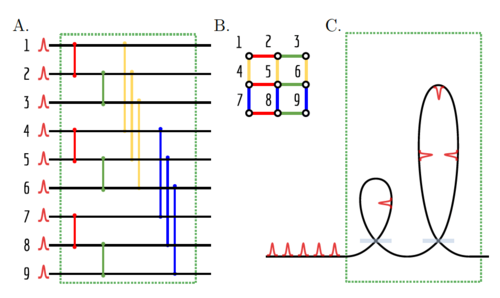Work on quantum advantages in Science Advances
Can near-term quantum devices outperform classical computers? This question is also at the heart of efforts of the Einstein Research Unit on near-term quantum devices. We address this question here for high-dimensional Gaussian boson sampling in work that has been published in the Science Advances. Photonics is a promising platform for demonstrating quantum computational supremacy (QCS) by convincingly outperforming the most powerful classical supercomputers on a well-defined computational task. Despite this promise, existing photonics proposals and demonstrations face significant hurdles. Experimentally, current implementations of Gaussian boson sampling lack programmability or have prohibitive loss rates. Theoretically, there is a comparative lack of rigorous evidence for the classical hardness of GBS. In this work, we make significant progress in improving both the theoretical evidence and experimental prospects. On the theory side, we provide strong evidence for the hardness of Gaussian boson sampling, placing it on par with the strongest theoretical proposals for QCS. On the experimental side, we propose a new QCS architecture, high-dimensional Gaussian boson sampling, which is programmable and can be implemented with low loss rates using few optical components. We show that particular classical algorithms for simulating GBS are vastly outperformed by high-dimensional Gaussian boson sampling experiments at modest system sizes. This work thus opens the path to demonstrating QCS with programmable photonic processors.
News from Jan 10, 2022
